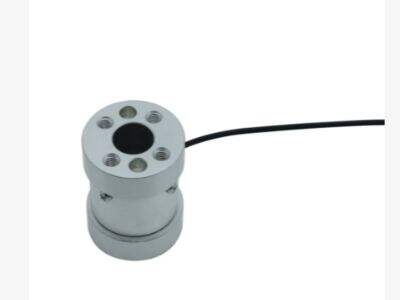Გამარჯობა, მეგობრებო! რა არის წვდომის უჯრა და რა შეიძლება მათ გამოვიყენო? ამ პოსტში ჩვენ გეხმარებით წვდომის უჯრის სექციების გასაგებაში ერთად მის მუშაობით, რათა მიიღოთ განსაკუთრებით გასაგები გასაგება. წვდომის უჯრები საკმარისად აინტერესო აპარატებია, რომლებიც გვეშვებენ წინადადების ზომის გაკეთებას. ამ სტატიაში მე ვცდილობ გავიგო Microservice არქიტექტურა. SOP არის აქ თქვენს დახმარებისთვის.

Რა არის წვდომის უჯრა?
Რა არის წვდომის უჯრა? წვდომის უჯრა არის იнструმენტი, რომელიც გამოიყენება წონის ზომისთვის ან ძალის რაოდენობის ზომისთვის, რომელსაც ადამიანი ან რამე ამატებს. იგი გამოიყენება საწონო საშუალებებში და სხვა აპარატებში, რომლებიც ზომავენ წონას. რაღაც ადამიანის დასაწყისად წვდომის უჯრაზე, იგი გარდაქმნის ძალას წონიდან ელექტრონულ მომსახურებად, რომლებიც საშუალებას აძლევს კომპიუტერს მათ მოკლედ წაიკითხოს. მაგრამ რა შედგება იმ ნაწილებს, რომლებიც მენახებიან ამ მნიშვნელოვან დავალების შესრულებაში? მოგვიანებით!
Წვდომის უჯრის ნაწილები
Ასე რომ, რაც ხედავთ, ის არის შემდეგი, წვდომის უჯრის ნაწილები, ტოლის სელი ზოგადად შედგება შემდეგი չոთხ ძირითადი ნაწილისაგან:
a) განავითარების ელემენტები b) მექანიკური ელემენტები c) ელექტრო ელემენტები d) დაცული აксესუარები. ყველა მათგანი ძირითადია წონის სწორი და სასურველი გამოთვლისთვის.
Განავითარების ელემენტი
Ჩატვირთვის სელის ყველაზე ძირითადი კომპონენტი არის მისი განავითარების ელემენტი. ეს არის იმ ნაწილი, რომელიც განავითარებს წნევას, როგორც აღმოჩნდება მაგალითად გამოწვევის სელში განავითარების ელემენტი განავითარებს ელექტრო მომენტებს, როდესაც გამოიყენება ძალა. განავითარების ელემენტი, ჩვეულებრივ ჩატვირთვის სელის ფორმაშია, რომელიც შედგება ძალიან მცირე მეტალურგიული სიმრავლისგან, რომელსაც უწოდებენ განავითარების გადაწყვეტილება. სიმრავლე: ძალიან მძიმე ხაზი (თქვენ შეგიძლიათ მისი მძიმეობა შეხედოთ ძალიან მცირე წნევით).
Მექანიკური ელემენტი
Ჩატვირთვის სელი შეიცავს მექანიკურ ელემენტს. ეს სerve როგორც წნევის განაწილებელი, რომელიც სასურველად განაწილებს წნევას load cell როდესაც უფრო მძლავრი გამოწვევები აღდგენილია. ეს სექცია გარკვეული წნევის შეყვანას გადაიტანს უფრო წაკითხებად ფორმაში გამოfühlი ელემენტისთვის. მექანიკური ელემენტი მეტალურგიული სპრინგია, რომელიც შეიძლება გაიზიდოს ან ჩაიკუნებინა წნევის გამო. ასეთი გზით, წვევის სელი შეიძლება იყენებოდეს განსხვავებული მასში გარკვევისთვის, რომ არ გადაიჭაროს ძალიან.
Ელექტრო ელემენტი
Კონტროლის მექანიზმი მიიღებს სიგნალებს გამოчувствების ელემენტიდან წონის გამოსაზომად. ეს ხშირად შედგება გარკვეული ცირკუიტისგან, რომელსაც Wheatstone bridge-ი უწოდებენ. AIC-მა ეს სიგნალები გადაიტანს ფორმაში, რომელიც ადამიანებს შეუძლია გამოიყენონ და გაიგონ. ის მუშაობს почти თარგმანების მსგავსად, რომელიც დახმარება კომუნიკაციაში წვევის სელსა და კომპიუტერს ან ეკრანს შორის.
Დაცვის ელემენტი
Ლაინინგი უნდა განხილეთ სწორად და ეს ძველია, რათა დაცული დარღვევის, წყალის ან ბუნებრივი მასალისგან დაცული იყო. ეს სექცია ჩვეულებრივ მეტალურ დაფა არის, რომელიც დაცული კომპონენტებს დაცვის. ეს უზრუნველყოფს, რომ დაცული წელი სწორად მუშაობდეს და არავინ არ ჩამოწერს მისი ზომების გზაზე. ძველია, რომ ეს დაცვა გათავისუფლებული იყოს, რადგან თქვენი დაცული წელი უარყოფითად შეიძლება გავლენას ახდენდეს მისი გარემოს პირობებზე.
Როგორ მუშაობს თითოეული ნაწილი?
Მეტალურ კაბელი მიერთება მეტალურ ფრეიმთან, რომელიც მოქმედებს როგორც გამოგზავნის ელემენტი. წნევით (მაგალითად, რაღაც მძიმე დადებული დაცულ წელზე) კაბელი გარდაქმნის. ეს ცვლილება მუშაობს როგორც სიგნალი ელექტრონული ელემენტისთვის, რომელიც იყენებს ამ ინფორმაციას.
Ეს მექანიკური მხარე მუშაობს წნევის განაწილებისთვის სასურველად დაცული წელის სიგრძეზე და წონის სელები . რომ შეზღუდოს დაცული წელის გარდაქმნა წონის ქვეშ საშუალებით. ის ამას გაუმჯობეს ზომების გზით.
Სენსორული ელემენტის სიგნალები შეყვანილია ელექტრო ელემენტში, რომელიც მათი დამუშავებას ხდის. ვითსტონის მостის წircuit გამოიყენება სიგნალების შედარებისა და გაზ Gaussian-კენ კომპიუტერში ან ეკრანზე. ეს გვეუბნება წანახავთ წონას საკითხს.
Ეს დაცული ელემენტი უზრუნველყოფს, რომ აღარ დაზიანდეს โหลด სელის სხვა ელემენტები. ეს დაარჩენილებს ნათელი, წყალი და ყველა სხვა დღიური რამე, რაც შეიძლება არასწორად წონას განსაზღვროს.
 EN
EN
 AR
AR HR
HR CS
CS DA
DA FI
FI FR
FR DE
DE EL
EL HI
HI IT
IT JA
JA NO
NO PL
PL PT
PT RO
RO RU
RU ES
ES SV
SV IW
IW ID
ID LV
LV LT
LT SR
SR SK
SK SL
SL UK
UK VI
VI ET
ET HU
HU TH
TH TR
TR FA
FA AF
AF KA
KA UR
UR BN
BN